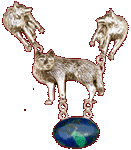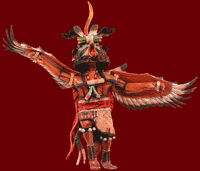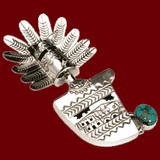| | | | | | | | | | | | | | | | | Click Selections Below to View
Our Southwestern Jewelry | | | | | | | | | | | | | | | | | | | | | | | | | | | | Our Southwestern section features Outstanding, Authentic Zuni, Hopi and Navajo Arts, Crafts, and Sterling Silver Jewelry made by Native Americans.The jewelry shown is made by many famous Native American silversmiths as well as other talented Native American artisans.We are proud to present their work.You will find a large selection of items which will be constantly updated. Please check our site frequently to see what new items have been added. Also, Check the SPECIAL ITEMS area for unique one-of-a-kind items. ZUNI INDIANS : MASTERS OF STONE AND SHELL SOUTHWESTERN JEWELRY The Zuni Indians live in a village in New Mexico approximately thirty-five miles south of Gallup. Incredibly, over half of the tribal members are involved in handcrafting indian jewelry. The use of stones and shells is particularly significant in Zuni designs, and their fetish necklaces are considered by many to be their most striking and original design contribution. These whimsical necklaces are crafted with an abundance of miniature and delicate stone carvings of likenesses of birds, bears, frogs and other animals. These carvings, which are usually made from turquoise, mother-of-pearl, coral, abalone, ivory and shells, are strung on strands of heishe which are made by Santo Domingo Indians. in New Mexico approximately thirty-five miles south of Gallup. Incredibly, over half of the tribal members are involved in handcrafting indian jewelry. The use of stones and shells is particularly significant in Zuni designs, and their fetish necklaces are considered by many to be their most striking and original design contribution. These whimsical necklaces are crafted with an abundance of miniature and delicate stone carvings of likenesses of birds, bears, frogs and other animals. These carvings, which are usually made from turquoise, mother-of-pearl, coral, abalone, ivory and shells, are strung on strands of heishe which are made by Santo Domingo Indians.
Zuni artists are also world-renowned for their channel inlay patterns, cluster, needlepoint and petit point designs. Their intricate and very precise patterns, which are inlaid in silver, are created with turquoise, pipestone, lapis lazuli, and malachite brought in by traders. All Zuni Indian jewelry is meticulously crafted and their choice of colors in uniting stones and shells is remarkable in its correctness. HOPI & NAVAJO : A CONTRAST IN CEREMONIES
Hopi and Navajo tribes differ greatly in their lifestyles and their religious practices. One of the areas that the differences are particularly striking is in their use of ceremonies.
 Religion is a vital part of both Hopi and Navajo cultures. The Hopi have an elaborate, almost year-round schedule of dances in their village plazas and kivas (ceremonial rooms). Nearly all Hopi dances serve as prayers for rain and fertile crops. The elaborate and brilliant masks, the ankle bells, the drums and chanting - all invite the attention of the kachinas (supernatural spirits) who bring rain. Men perform these dances, and while they're dancing they take on take on the persona of kachinas. At the end of the line of dancers, you might see boys who are learning the ritual; dance steps must be performed precisely. Religion is a vital part of both Hopi and Navajo cultures. The Hopi have an elaborate, almost year-round schedule of dances in their village plazas and kivas (ceremonial rooms). Nearly all Hopi dances serve as prayers for rain and fertile crops. The elaborate and brilliant masks, the ankle bells, the drums and chanting - all invite the attention of the kachinas (supernatural spirits) who bring rain. Men perform these dances, and while they're dancing they take on take on the persona of kachinas. At the end of the line of dancers, you might see boys who are learning the ritual; dance steps must be performed precisely.
Most Navajo ceremonies are centered around healing. If someone is sick, the family calls in a healer who uses sand paintings, chants, and dancing to effect a cure. These events, often held late at night, aren't publicized. If you're driving at night and see large bonfires outside a house, it's likely there's a healing ceremony going on, but don't go over unless you are invited.
"HOZO," THE NAVAJO ARTISTIC IDEAL 
Curiously, Navajo indian jewelry artists of the early 20th century were experimenting with form at the same time young European sculptors, such as Brancusi and Lipschitz, were challenging the dictums of representational or realistic art expression. From the beginning, the Navajo artist never embraced the practice of replicating nature.
An enhancement of " hozho, " a concept of melding beauty, harmony, and well-being, is the mandate of the Navajo people. It is a state of nature to be sought, experienced, regenerated, and projected into the universe. Navajo jewelry art has been an exploration of beauty and form thus a fulfillment of " hozho".
HOPI AND NAVAJO JEWELRY
Hopi and Pueblo artists learned silversmithing from the Spanish in the 1800's, and metal jewelry arts blossomed in the Southwest, particularly the distinctive squash blossom necklace. Hopi silver overlay bracelets, and Navajo turquoise inlay rings developed from the fusion of the new techniques with traditional designs. Native beadwork, on the other hand, was already extremely advanced in pre-Columbian times, including the fine grinding of turquoise, coral, and shell beads into smooth heishi necklaces, the delicate carving of individual wood and bone beads, the soaking and piecing of porcupine quills, and the intricate stitching of thousands of beads together.

For more on Native American indian jewelry history, click on one of the following links below. The crescent shaped naja is one of the most familiar forms in Navajo indian jewelry. It clearly comes from outside the Navajo culture. It is thought to have originated in the Old World as a Spanish horse gear - a third eye placed on the animals forehead to ward off evil. It is often used as a focus piece in " squash blossoms " are actually pomegranate blossoms that were worn as trouser decorations by Spanish Colonial gentleman. |

 in New Mexico approximately thirty-five miles south of Gallup. Incredibly, over half of the tribal members are involved in handcrafting indian jewelry. The use of stones and shells is particularly significant in Zuni designs, and their fetish necklaces are considered by many to be their most striking and original design contribution. These whimsical necklaces are crafted with an abundance of miniature and delicate stone carvings of likenesses of birds, bears, frogs and other animals. These carvings, which are usually made from turquoise, mother-of-pearl, coral, abalone, ivory and shells, are strung on strands of heishe which are made by Santo Domingo Indians.
in New Mexico approximately thirty-five miles south of Gallup. Incredibly, over half of the tribal members are involved in handcrafting indian jewelry. The use of stones and shells is particularly significant in Zuni designs, and their fetish necklaces are considered by many to be their most striking and original design contribution. These whimsical necklaces are crafted with an abundance of miniature and delicate stone carvings of likenesses of birds, bears, frogs and other animals. These carvings, which are usually made from turquoise, mother-of-pearl, coral, abalone, ivory and shells, are strung on strands of heishe which are made by Santo Domingo Indians. Religion is a vital part of both Hopi and Navajo cultures. The Hopi have an elaborate, almost year-round schedule of dances in their village plazas and kivas (ceremonial rooms). Nearly all Hopi dances serve as prayers for rain and fertile crops. The elaborate and brilliant masks, the ankle bells, the drums and chanting - all invite the attention of the kachinas (supernatural spirits) who bring rain. Men perform these dances, and while they're dancing they take on take on the persona of kachinas. At the end of the line of dancers, you might see boys who are learning the ritual; dance steps must be performed precisely.
Religion is a vital part of both Hopi and Navajo cultures. The Hopi have an elaborate, almost year-round schedule of dances in their village plazas and kivas (ceremonial rooms). Nearly all Hopi dances serve as prayers for rain and fertile crops. The elaborate and brilliant masks, the ankle bells, the drums and chanting - all invite the attention of the kachinas (supernatural spirits) who bring rain. Men perform these dances, and while they're dancing they take on take on the persona of kachinas. At the end of the line of dancers, you might see boys who are learning the ritual; dance steps must be performed precisely.
